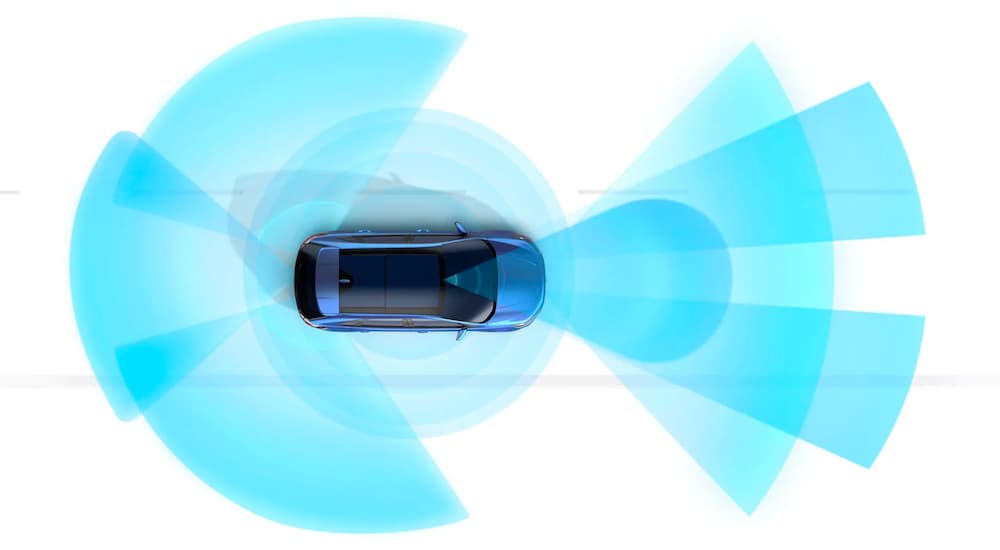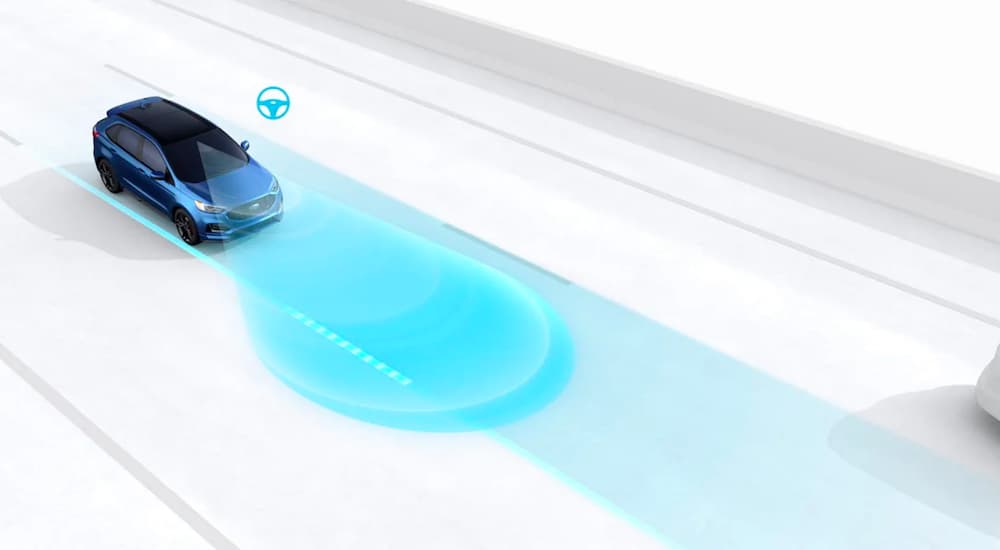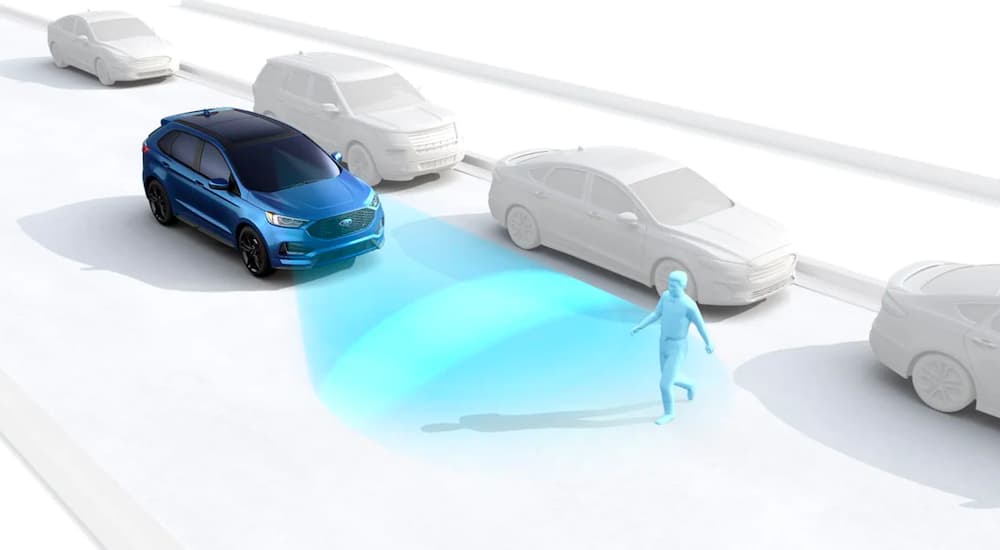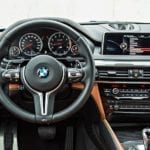At your local Ford dealership, you will find plenty of tough trucks, roomy SUVs, and comfortable sedans. Above all, this brand makes vehicles designed for families, commutes, and regular hard use. One of the biggest priorities for a growing family when considering a long-term automobile purchase is safety. This is one area Ford does not take lightly or perform halfway. Ford is always focused on the needs of its customers. One needs to look no further than the various safety features and technologies to see what a high priority this is for the company.
From roll control and stability control built into the framework of the vehicles to coordinated safety systems and advanced seat belts, Ford wants to make sure its passengers are safe and protected inside the vehicle and out. There are active systems, such as anti-lock brakes and electronic stability control, that help the driver control the car all the time. Other systems are passive, activating only in a split second before impact. These include items like airbags, seat belts, and Ford’s pedal intrusion prevention system. All of these well-designed systems work in a unified cohesion to keep Ford drivers and passengers safe on the road.
Passive Systems: There When You Need Them
The passive safety systems, as noted above, only activate in the seconds before a collision. This can make them easy for most drivers to forget about or dismiss as unimportant, but that is hardly the truth. These systems installed by Ford may be some of the most important, though everyone certainly hopes they can serve an out-of-sight, out-of-mind role: there when needed and quietly disregarded otherwise. That, inevitably, is the very role these passive systems were made for; they perform their job only when needed and help to minimize the impact or severity of collisions.
The two rear outer seats in many Fords can be outfitted with a unique rear inflatable seat belt. In the event of a crash, the belts are made to inflate, spreading the force of any collision over a larger area of the passengers’ bodies. Increasing the surface area of the belt across the chest decreases the amount of pressure put on a passenger when their body snaps forward. This also keeps the head relatively more still and helps to cushion the neck as well as the sternum in the event of a crash. Of course, inflatable seat belts are just the start when it comes to Ford’s many safety features.
Another of the passive safety features included in Ford’s latest suite is Pre-Collision Assist with Automatic Emergency Braking. This feature scans the road ahead to alert the driver to pedestrians, vehicles, or other collision risks in the vehicle’s path. If the driver does not react to the warning and an impact is imminent, the vehicle is programmed to apply the brakes automatically. This feature ensures that Ford vehicles can stay safe on the road and stop short to avoid possible accidents.
A safety canopy and safety cage keep the framework of Ford vehicles at their safest. The canopy includes side curtain airbags, usually installed for the driver and all outermost passengers, whether in the front seat or back. The airbags deploy in the event of a side collision or a rollover accident. The safety cage includes sections of the vehicle that are appropriately strengthened to improve passenger safety, as well as sections designed to crumple without endangering anyone inside. This can redirect the energy absorbed in a crash away from those inside the vehicle. The combination of all of these passive systems ensures that if the worst happens, your vehicle will keep you and your passengers safe.
Active Systems: Always in Use
Ford’s active safety systems are more in line with what drivers or buyers are used to hearing among listed vehicle features. These are used regularly, often without any kind of thought from the driver and without the split-second reaction timing of the passive systems that kick in right before a collision. Ford’s Lane-Keeping System, Roll Stability Control, Electronic Stability Control, and other aspects of a vehicle’s basic framework fall into this category. These features are more of an inherent part of a car’s skeleton than some of the passive systems discussed above, making the active safety systems some of the first considerations Ford has when building a new vehicle.
Ford’s lane-keeping system uses a camera mounted above the rearview mirror. This camera monitors road lane markings and detects drifting. The steering system can then adjust automatically, or the system will alert the driver to the drifting. The Lane Keeping System kicks in above 40 miles per hour when the camera can detect at least one lane marking on one side of the road. The alert and aid modes can be used separately or together, depending on what settings the driver has selected.
Roll Stability Control is designed to monitor the vehicle and identify any dangerous conditions that could lead to a vehicle rollover. The electronic stability control is then triggered to intervene. This system can monitor the speed of each individual wheel, the amount of power going to each, and the amount of braking going to each. This system can then balance the amount of braking power going to each wheel and draw power away from the engine at the same time. This ensures less risk of oversteering or wheelspin and makes it easier to control the vehicle, even in adverse conditions.
Curve Control is yet another way that Ford makes sure its drivers stay in control behind the wheel. This system is designed to detect understeering when a car is traveling too fast along too sharp a turn. Curve Control can then reduce engine torque and apply braking to help slow a vehicle and prevent it from overshooting a turn. This technology is particularly designed to improve safety on freeway off-ramps, but it will work well on any sharp corner.
Ford Safety: America’s Best
The safety features included in most Ford vehicles have come to be a standard suite of features that most buyers expect to find. But the fact that these features are expected makes them no less appreciated for their presence. Ford’s safety systems have earned the company consistently high ratings, especially in areas like front collision crash tests or high resale value. Ford truly puts its customers first and always will with highly responsive safety systems, both passive and active. These safety features are rigorously tested before being included in modern vehicles and are continually under scrutiny, ensuring the best of the best from Ford.
Curve Control, Automatic Emergency Braking, Roll Stability Control, and Electronic Stability Control all have their place when driving a Ford branded vehicle. These active systems are always in use as long as the vehicle is in motion, and they are designed not to break down over the long haul. The passive systems, those made to show up only at the moment they are needed, can require some manufacturer resets after they have been used, but that makes them no less important or life-saving than the rest. At your local Ford dealer, you will find some of the safest vehicles on the road today, from the front fender to the back bumper.






